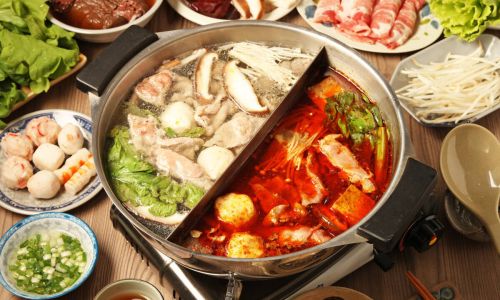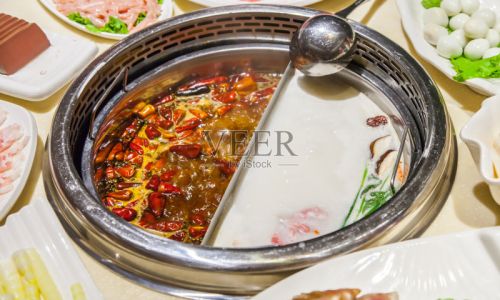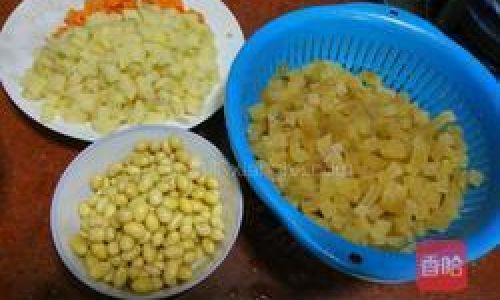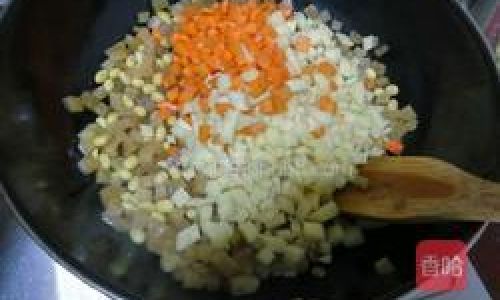Hot pot, a beloved culinary tradition deeply embedded in global cuisine, has transcended borders to become a universal symbol of communal dining. Originating in China, this interactive cooking method invites diners to gather around a simmering pot of broth, selecting ingredients to cook at their leisure. The beauty of hot pot lies in its adaptability—a canvas for personal preference and regional flavors. Yet, amidst the endless array of proteins, vegetables, and noodles, three ingredients consistently rise to the top as indispensable: thinly sliced meat, fresh mushrooms, and handmade tofu. These staples not only elevate the broth’s complexity but also cater to diverse palates, ensuring every spoonful delivers satisfaction. Let’s explore why these trio members are non-negotiable for any hot pot enthusiast.
Thinly Sliced Meat: The Heartbeat of Hot Pot
No hot pot feast is complete without the sizzle and aroma of thinly sliced meat gliding into the broth. Beef and lamb are the most celebrated choices, prized for their tender texture and ability to absorb the broth’s essence. The key to their perfection lies in the slicing technique—paper-thin cuts that cook within seconds, preserving their juiciness.
Why It’s Essential
Meat serves as the hot pot’s protein anchor, offering a rich, savory base that complements lighter ingredients. Its marbling dissolves into the broth, infusing it with depth and umami. For those who prefer leaner options, chicken or pork can substitute, but beef and lamb remain iconic for their bold flavor profiles.
Varieties to Explore
- Wagyu Beef: Renowned for its melt-in-your-mouth texture and buttery flavor, Wagyu elevates hot pot to a gourmet experience.
- Lamb Shoulder: Slightly gamey with a tender chew, lamb adds a robust note to mild broths.
- Marinated Meats: Pre-marinated slices with spices like Sichuan pepper or garlic offer an extra layer of complexity.
Cooking Tips

- Swirl slices in the broth for 10–15 seconds to avoid overcooking.
- Pair with sesame or chili oil dipping sauces to enhance natural flavors.
Cultural Significance
In Chinese hot pot culture, sharing meat symbolizes generosity and togetherness. Diners often place raw slices on communal plates, fostering a sense of camaraderie as everyone cooks simultaneously.
Fresh Mushrooms: Earthy Umami Boosters
Mushrooms are the unsung heroes of hot pot, transforming a simple broth into a flavor-packed elixir. Their earthy, umami-rich profiles balance the meal’s richness while adding a satisfying meatiness for vegetarians.
Why It’s Essential
Mushrooms release glutamates when cooked, amplifying the broth’s savory notes without overwhelming other ingredients. Their sponge-like texture also absorbs seasonings, making each bite a burst of concentrated flavor.
Top Varieties
- Enoki Mushrooms: Delicate, crunchy strands that add texture and a mild sweetness.
- Shiitake: Meaty and smoky, shiitake mushrooms impart a deep, woodsy aroma.
- Oyster Mushrooms: Velvety and tender, these mushrooms melt into the broth, thickening it slightly.
Cooking Tips
- Add mushrooms early to let their flavors meld with the broth.
- Reserve some for later stages to enjoy their plump, juicy texture.
Health Benefits
Rich in antioxidants, fiber, and B-vitamins, mushrooms offer a nutritious boost. They’re also low in calories, making them ideal for health-conscious diners.
Handmade Tofu: The Versatile Canvas
Tofu, a soybean curd, is the hot pot’s chameleon. Its porous structure acts as a flavor sponge, absorbing broth nuances while adding a creamy, custard-like contrast to meats and vegetables.

Why It’s Essential
Tofu bridges dietary preferences, appealing to vegans, vegetarians, and meat-eaters alike. Its neutral taste allows it to adapt to any broth, from spicy Sichuan to aromatic tom yum.
Types to Try
- Soft Tofu: Silken and delicate, it dissolves into the broth, creating a luxurious texture.
- Firm Tofu: Holds its shape during cooking, offering a hearty bite.
- Fried Tofu Puffs: Crispy exteriors that puff up when simmered, trapping broth inside for explosive flavor.
Cooking Tips
- Add soft tofu gently to avoid breaking; firm varieties can withstand boiling.
- Pair with spicy broths—the tofu’s mildness tempers heat beautifully.
Cultural Context
Tofu’s history in hot pot dates back centuries, symbolizing humility and adaptability in Chinese philosophy. Its ability to absorb flavors mirrors the meal’s communal spirit, where individual tastes unite in harmony.
The Art of Pairing: Dipping Sauces
While the trio forms the foundation, dipping sauces elevate the experience. Customizable and regionally diverse, sauces allow diners to tailor flavors.
Classic Combinations
- Sichuan Style: Minced garlic, chili oil, and Sichuan pepper for a numbing heat.
- Cantonese Style: Light soy sauce, sesame oil, and chopped cilantro.
- Japanese Shabu-Shabu: Ponzu sauce with grated daikon for a citrusy kick.
Pro Tip
Mix a raw egg yolk into your sauce for a velvety texture that coats meat perfectly.

Regional Twists on the Trio
Hot pot’s beauty lies in its regional adaptability. Here’s how the trio shines globally:
- Korean Army Stew (Budae Jjigae): Spicy kimchi broth with thinly sliced beef and enoki mushrooms.
- Thai Tom Yum Hot Pot: Lemongrass-infused broth paired with oyster mushrooms and soft tofu.
- Japanese Shabu-Shabu: Kombu broth highlighting premium Wagyu and silken tofu.
Sustainability and the Modern Hot Pot
As culinary trends shift toward sustainability, the trio adapts. Plant-based meat alternatives now mimic beef and lamb, while foraged mushrooms and organic tofu cater to eco-conscious diners.
Tips for Ethical Eating
- Source meat from local, grass-fed farms.
- Opt for dried mushrooms to reduce packaging waste.
- Choose tofu made with non-GMO soybeans.
Conclusion: The Trio’s Timeless Appeal
Thinly sliced meat, fresh mushrooms, and handmade tofu are more than ingredients—they’re the soul of hot pot. Together, they create a symphony of textures, flavors, and aromas that transcend cultural boundaries. Whether you’re a purist savoring classic Sichuan broth or an adventurer experimenting with fusion styles, these staples guarantee a memorable meal. So, the next time you gather around a steaming pot, remember: the magic isn’t just in the broth, but in the trio that turns simplicity into perfection.
Final Thought
Hot pot is a metaphor for life itself—diverse elements united by a common warmth. Embrace the trio, share stories, and let the simmering pot nourish both body and spirit.





0 comments